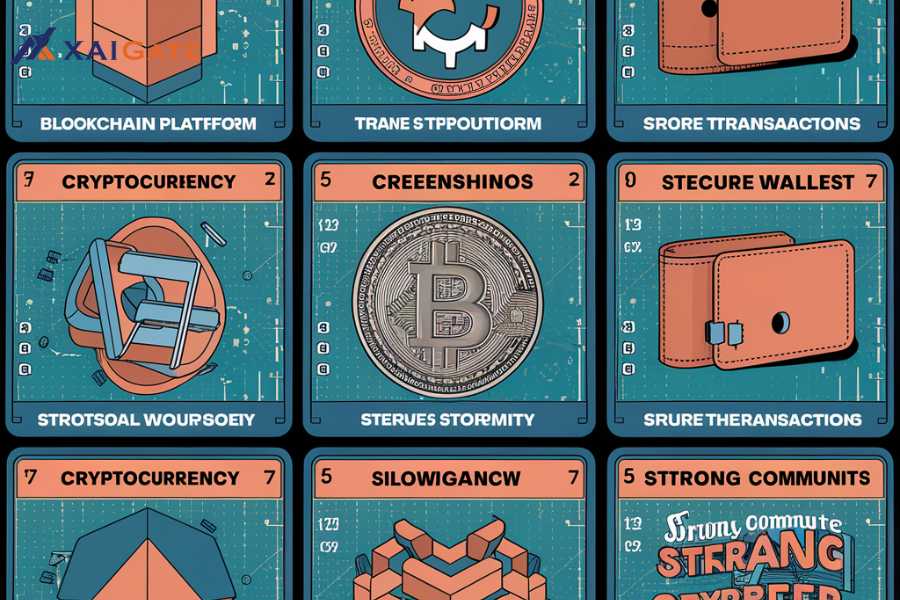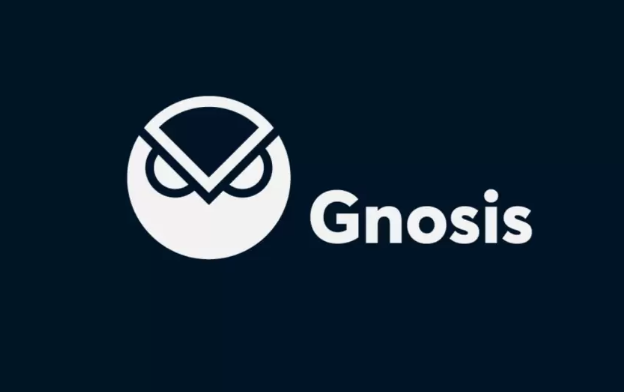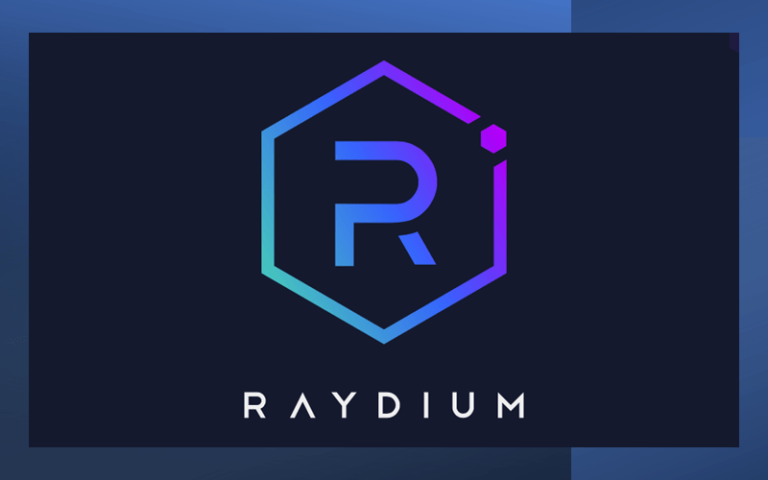The process of making a digital currency includes a few important stages. First, it is important to comprehend the fundamental principles of blockchain technology. To know “How to Make a Cryptocurrency?” one also needs to learn programming languages such as C++ and Solidity that are used for coding the currency itself. Moreover, securing the network as well as adhering to legal requirements are critical for potential success or failure of its launch.

Understanding Cryptocurrencies
To start learning “How to Make a Cryptocurrency?” it’s essential to understand cryptocurrencies and the decentralized nature of blockchain technology. Examining currencies like Bitcoin and Ethereum can provide insights into their functionality and market operations. This foundational knowledge is crucial for creating a secure and effective coin.
Definition and Basic Concepts
Crypto currency is digital money or virtual currency that keeps itself secure through cryptographic measures and works outside the control system of any central authority. Some of its fundamental concepts are block chain technology which records the transactions in a distributed ledger, decentralization guaranteeing an absence of totalitarianism by any member within the entire network among other properties like anonymity, transparency and unchangeable characteristics.
Types of Cryptocurrencies
Numerous categories are available for cryptocurrencies and they serve different objectives. The first and most recognized cryptocurrency – Bitcoin – essentially functions as an online store of value. Altcoins such as Ethereum provide more services like smart contracts whilst stablecoins are meant to stay stable because they are attached to some reserve asset.

>>>> Learn more: Best PrestaShop Cryptocurrency Payment Gateway 2024
Planning Your Cryptocurrency
To create a cryptocurrency, start by defining its purpose and target audience. Develop a detailed whitepaper outlining technical specs, the economic model, and governance. Assemble a skilled team of developers and advisors to help build and launch your coin.
Purpose and Use Case
When learning about “How to Make a Cryptocurrency?” understanding its purpose and use case is very important. Knowing what is crypto payment gateway a guide and what problems your cryptocurrency wants to resolve or the niche it wishes to serve will guide its building and features. Clear use cases make sure that the cryptocurrency satisfies user requirements and has practical deployments in the market.
Choosing a Consensus Mechanism
Selecting a consensus mechanism while creating a cryptocurrency is vital for transaction validation and addition to the blockchain. Security is assured in Proof of Work while energy efficiency is the hallmark of Proof of Stake. This decision has implications on the cryptocurrency’s performance, scalability and overall safety.
Technical Aspects of Creating a Cryptocurrency
Tokens are created by building a new blockchain or using existing platforms like Ethereum. This involves developing smart contracts and secure consensus mechanisms for transaction verification. Understanding encryption processes and network protocols is essential for creating reliable digital currency.
Selecting a Blockchain Platform
The significance of choosing the right blockchain platform while Learning “How to Make a Cryptocurrency?” cannot be overstated. It is important to pick the one that works best for your plan like Ethereum if you want to create smart contracts or Binance Smart Chain in case you need a less costly option. Considering aspects such as scalability, security and community assistance will guarantee that the platform is capable of supporting your virtual coin appropriately.

Developing the Core Code
The core code is a crucial step in developing the cryptocurrency. This includes writing the blockchain protocol, specifying the transaction processing, and determining the security issues. Proficiency in programming languages such as C++ or Solidity is required for making a strong and effective currency.
Creating Smart Contracts
Smart contracts are one of the most important steps in learning “how to make a cryptocurrency?”. These self-executing contracts will automate transactions and enforce rules without the need for intermediaries. Smart contract coding can thus help you define your cryptocurrency’s functionality as well as its conditions of use, ensuring that it operates transparently and efficiently.

Establishing the Cryptocurrency
Creating a cryptocurrency involves designing and launching it on a blockchain, defining features like total supply and consensus, and integrating wallets and exchanges. Strong security and compliance are essential for its success and legitimacy.
Minting Your Cryptocurrency
Digitally minting a currency entails the generation of new coins and their distribution within a particular blockchain. Generally, it would require determining the overall amount, establishing smart contracts and confirming that the coins comply with the requirements of that specific platform. It is therefore necessary to properly address this issue in order for cryptocurrencies to become workable and safe as they are launched.
Setting Up a Wallet
An essential step in setting up a cryptocurrency is setting up a wallet that allows users to store their digital assets securely and manage them accordingly. You will need to select from software wallets for convenience or hardware wallets to boost your security level. If you want to keep your cryptocurrency safe, you need to set up your wallet appropriately and back it up.

>>> Learn more about: 5 TOP Cryptocurrency Payment Gateway for Business
Ensuring Security and Compliance
To set up a cryptocurrency, ensure strong security and compliance to prevent fraud and legal issues. Implement robust encryption, conduct regular security audits, and adhere to legal and regulatory guidelines to maintain lawfulness.
Security Best Practices
Best security practices are important when developing a cryptocurrency that prevents against theft and fraud. Strong encryption techniques should be advocated, software ought to be routinely updated while multi-signature wallets must also be utilized for extra security. Additionally, knowledge of most popular vulnerabilities as well as being watchful on possible attacks will help in maintaining the genuineness of your cryptocurrency.
Legal and Regulatory Considerations
When creating a cryptocurrency, navigating the legal and regulatory considerations is important. It is mandatory to comply with the local laws and regulations in order not to fall into problems such as adhering to anti-money laundering (AML) law or KYC. Legal experts will help you in understanding these complex environments while ensuring that your project remains legitimate.
Launching Your Cryptocurrency
There are several important steps involved in launching your cryptocurrency which may include finalizing the technicalities and undertaking a comprehensive security audit. In addition to this, you should employ effective marketing strategies to promote your coin to potential investors and users. A successful launch involves coordinating efforts so that your cryptocurrency reaches the desired audience for it to have the desired effect.

Building a Community
Creating a cryptocurrency requires building a community, which is crucial for gaining support and engaging people in your project. Establish trust in potential users and investors through social media, forums, or events. A good, active community can encourage adoption or help your cryptocurrency to thrive.
Marketing and Promotion
Success of any cryptocurrency depends fundamentally on effective marketing and promotion. For instance, a strong online presence can be achieved for your currency through social media, forums, targeted campaigns etc., to attract both investors and users. Furthermore, being part of the community is vital; as such, it is imperative to utilize a clear message that passes on an idea during the day-to-day running of the business. This will ultimately lead to more visibility and widespread acceptance in future.
Maintaining and Updating Your Cryptocurrency
Long-term success and security of your cryptocurrency depend on regular maintenance and updates. Keeping it current with bug fixes, feature improvements, and technological advancements ensures a reliable platform that adapts to evolving digital trends.
Ongoing Development
In creating and maintaining a successful cryptocurrency, ongoing development is essential. Regular updates and improvements serve to address security vulnerabilities, improve functionality, and adapt to market changes. Continuous community engagement and developer activities are important for ensuring that the cryptocurrency evolves in line with the fast-changing digital environment.
Scaling and Future Plans
The creation of cryptocurrencies requires scaling and future planning as important elements to ensure success in the long run. Once your currency gains popularity, prepare for an upsurge in demand and put money into options that can manage growing transaction volumes efficiently. Additionally, coming up with a platform that can make way for better versions of itself also helps when it comes to technology changes since there are also changes in market trends.

>>> Learn more: How to Accept Cryptocurrency Payments with Magento 2
Conclusion
As a way out, acquiring knowledge on “How to Make a Cryptocurrency?” entails grasping the concept of blockchain technology, choosing the appropriate platform alongside making sure compliance with the law. If these essentials are well mastered and fortified by good security measures, you are able to create your own money that can be circulated across borders easily. Additionally, continuous improvements by Cryptocurrency Payment gateway might not only help the sustainability but also keep track of changes in politics over time, which directly affect its progress.
XAIGATE is a secure and user-friendly crypto payment gateway that allows businesses to accept cryptocurrency payments from customers around the world. With How to Accept Bitcoin on WooCommerce, businesses can easily integrate cryptocurrency payments into their existing websites or online stores.










What are the essential steps involved in creating your own cryptocurrency, and what key factors should you consider before launching it?
Creating your own cryptocurrency is an exciting venture that involves several technical and strategic steps. Below is a comprehensive guide on how to make a cryptocurrency, including key factors you should consider before launching it:
1. Steps to Create a Cryptocurrency:
a. Define Your Purpose and Goals
Before creating a cryptocurrency, it’s essential to define its purpose and goals. Why are you creating the cryptocurrency? Some common goals for launching a new cryptocurrency include:
Providing faster and cheaper transactions.
Solving a specific problem in a niche industry.
Offering privacy-focused payments.
Enabling decentralized finance (DeFi) applications.
Clearly outlining the objectives will help guide the development process.
b. Choose the Consensus Mechanism
The consensus mechanism is the method by which transactions are verified and added to the blockchain. It ensures that the cryptocurrency is secure and prevents double-spending. Some popular consensus mechanisms include:
Proof of Work (PoW): Used by Bitcoin, requiring miners to solve complex mathematical puzzles.
Proof of Stake (PoS): Used by Ethereum 2.0, relying on validators who hold a certain amount of the cryptocurrency.
Delegated Proof of Stake (DPoS): A more scalable version of PoS.
Proof of Authority (PoA): Used by permissioned blockchains with a trusted set of validators.
Choosing the right consensus mechanism is critical for the performance and scalability of your cryptocurrency.
c. Pick a Blockchain Platform
You can either build your cryptocurrency from scratch using a custom blockchain or create a token on an existing blockchain. Here are two main options:
Create a New Blockchain: If you want complete control over your cryptocurrency, building your own blockchain is the best option. This option requires a high level of technical expertise and resources.
Use an Existing Blockchain: Platforms like Ethereum, Binance Smart Chain, or Solana allow you to create a token using their blockchain infrastructure. This is a more cost-effective and quicker method, as you leverage the security and scalability of these established blockchains.
d. Design the Nodes
Nodes are the computers that validate and store blockchain data. If you’re creating your own blockchain, you’ll need to design the nodes:
Public Nodes: Anyone can join and validate transactions.
Private Nodes: Only authorized participants can join, commonly used for business or enterprise purposes.
You need to decide whether your blockchain will be public, private, or hybrid.
e. Establish Blockchain’s Internal Architecture
The architecture of your blockchain defines how it will work. This includes:
Key Management: How users will create wallets and manage their private keys.
Transaction Mechanism: The process by which transactions will be initiated, processed, and confirmed.
Permissions: Who can access and interact with the blockchain.
Monetary Policy: Will your cryptocurrency have a fixed supply, or will new coins be mined over time?
f. Choose a Consensus Mechanism for Validation
As mentioned earlier, choose a consensus mechanism like Proof of Work (PoW) or Proof of Stake (PoS). This will influence how transactions are verified and how new coins are generated or mined.
g. Develop the Cryptocurrency
The actual development involves coding the blockchain or token using programming languages like C++, Python, or Go. You can hire a development team or use open-source codebases, such as Bitcoin Core or Ethereum, to build your cryptocurrency.
Smart Contracts: If you’re creating a token on an existing blockchain, you’ll need to write smart contracts. These are self-executing contracts that manage the transfer of assets without intermediaries.
Wallet Creation: Develop a wallet for users to store, send, and receive your cryptocurrency. Wallets can be hot (online) or cold (offline) depending on security needs.
h. Test the Cryptocurrency
Once your cryptocurrency is developed, it’s essential to test it thoroughly. Use testnets (experimental blockchain environments) to simulate real-world scenarios and identify any potential bugs or issues. You should test:
Transaction speed and efficiency.
Security vulnerabilities.
Scalability (handling high volumes of transactions).
Smart contract functionality.
i. Launch Your Cryptocurrency
Once testing is complete and you’re confident in the stability and security of your cryptocurrency, you can launch it to the public. Ensure you have proper marketing and community-building strategies in place to attract users and miners (if applicable).
Initial Coin Offering (ICO): If you need to raise funds for the project, consider launching an ICO or Initial DEX Offering (IDO).
Exchanges: List your cryptocurrency on popular exchanges to increase liquidity and accessibility.
Marketing: Build a strong community around your cryptocurrency. This can involve social media campaigns, influencer partnerships, and educational resources.
2. Key Factors to Consider Before Launching Your Cryptocurrency:
a. Legal and Regulatory Compliance
Cryptocurrency is subject to varying regulations depending on your jurisdiction. Ensure you’re compliant with local laws related to securities, taxation, and financial regulations. Consult with legal experts to navigate potential challenges and avoid legal issues.
b. Security
Security is paramount for any cryptocurrency. Ensure your blockchain and smart contracts are secure to prevent attacks such as double-spending, hacking, and fraud. Regularly audit your code and implement best practices like encryption and multi-signature wallets.
c. Community and Adoption
The success of a cryptocurrency depends on its adoption by users, developers, and miners. Building a strong community through forums, social media, and engagement is essential for long-term success. Consider incentives for early adopters, such as staking rewards or mining bonuses.
d. Scalability and Speed
Scalability is crucial for a cryptocurrency to handle growth. Ensure that your blockchain can handle increasing transaction volumes and that the network can process transactions quickly. Consider using layer-2 solutions or sharding to improve scalability.
e. Market Competition
The cryptocurrency market is highly competitive. Assess your competition, identify unique value propositions for your cryptocurrency, and be prepared to differentiate it from the many others in the market.
3. Conclusion:
Creating your own cryptocurrency requires careful planning, technical expertise, and strategic foresight. By following the steps outlined in this guide, you can develop a cryptocurrency that serves a specific purpose, addresses market needs, and attracts a strong user base. Whether you build from scratch or use an existing blockchain platform, always ensure security, scalability, and legal compliance are top priorities.
By focusing on your cryptocurrency’s unique features and creating a strong community around it, you can increase its chances of success in a competitive and evolving market.
What are the essential steps to create your own cryptocurrency?
Creating your own cryptocurrency can be a rewarding venture, but it requires a solid understanding of blockchain technology, programming, and the legal aspects of crypto. Here’s a comprehensive guide on how to create a cryptocurrency, step by step:
1. Define the Purpose of Your Cryptocurrency
Before you dive into the technical details, it’s important to clearly define the purpose of your cryptocurrency. Ask yourself questions like:
What problem does your cryptocurrency solve?
Is it intended for a specific industry or use case?
Will it serve as a store of value, a medium of exchange, or a utility token?
Having a clear vision will help you decide the features, functionality, and blockchain platform for your cryptocurrency.
2. Choose a Consensus Mechanism
The consensus mechanism is the protocol that validates transactions on your cryptocurrency’s blockchain. The two most common mechanisms are:
Proof of Work (PoW): Used by Bitcoin, where miners solve complex puzzles to validate transactions.
Proof of Stake (PoS): Used by Ethereum 2.0, where validators hold a stake in the cryptocurrency and are selected to validate transactions based on their holdings.
You can choose the mechanism that best fits your needs. For example, PoS is generally more energy-efficient than PoW.
3. Pick a Blockchain Platform
Unless you plan to build your own blockchain from scratch, you will need to choose an existing blockchain platform on which to build your cryptocurrency. Some of the popular blockchain platforms include:
Ethereum: The most popular platform for creating tokens through its ERC-20 standard.
Binance Smart Chain (BSC): Known for its low transaction fees and fast processing times.
Solana: A fast and scalable blockchain suitable for high-volume transactions.
Polygon: Built on Ethereum, offering lower gas fees and faster transactions.
Each platform has its own benefits, and the one you choose will depend on factors like scalability, security, and speed.
4. Design the Nodes
Decide on the type of blockchain network you want. You have three main options:
Public Blockchain: Open and decentralized, where anyone can join the network (e.g., Bitcoin, Ethereum).
Private Blockchain: Restricted to a certain number of users or organizations.
Hybrid Blockchain: Combines elements of both public and private blockchains.
You also need to decide whether the blockchain will be permissioned or permissionless.
5. Create the Cryptocurrency’s Architecture
Design the structure of your cryptocurrency, including:
Tokenomics: Determine how many tokens will be created, their distribution method (e.g., ICO, mining, staking), and how to handle future supply and demand.
Features: Define whether your cryptocurrency will have features like smart contracts, governance mechanisms, or privacy-enhancing technologies.
Ensure that the architecture supports your long-term vision for the cryptocurrency.
6. Develop the Cryptocurrency
This is the technical phase, where you will need a team of blockchain developers to write the code for your cryptocurrency. If you’re using a blockchain platform like Ethereum, much of the infrastructure is already built, and you can focus on developing your unique token or coin. If you’re building from scratch, the development process will be more complex and require deep knowledge of blockchain coding languages.
Here’s a basic overview of the development process:
Write the smart contract for your token (for example, ERC-20 for Ethereum-based tokens).
Implement the necessary features like wallets, transaction handling, and a network protocol.
Conduct rigorous testing to ensure that everything works as expected.
7. Test the Cryptocurrency
Testing is crucial to ensure that your cryptocurrency is secure and functions as intended. Create a testnet, a simulated version of your cryptocurrency, to try out the system in real-world scenarios without risking actual tokens. Perform stress testing, bug fixing, and ensure scalability before moving to the mainnet.
8. Launch the Cryptocurrency
Once everything is in place and thoroughly tested, you can launch your cryptocurrency on the mainnet. This is where it will start to operate in the real world, and users can begin mining, staking, or trading your tokens.
9. Promote and Grow Your Cryptocurrency
The success of your cryptocurrency depends largely on how well you promote and market it. Building a community of supporters, investors, and users is essential. Utilize social media, crypto forums, and influencer marketing to spread the word. You should also ensure your cryptocurrency is listed on exchanges, so people can easily buy and sell it.
10. Stay Compliant with Regulations
Finally, make sure you stay compliant with the regulatory environment in your country and globally. Cryptocurrency regulations are evolving rapidly, and you may need to consult legal experts to ensure your cryptocurrency is fully compliant with laws regarding taxes, anti-money laundering (AML), and know-your-customer (KYC) requirements.
Conclusion:
Creating a cryptocurrency is a complex but highly rewarding process. From defining its purpose and choosing a blockchain platform to coding and promoting it, each step requires careful planning and execution. At XAIGATE, we provide comprehensive support to help businesses and developers navigate the world of cryptocurrency payments, whether you’re building a new cryptocurrency or integrating crypto payment solutions into your business. Our solutions offer secure, scalable, and user-friendly gateways to facilitate crypto transactions for businesses across the globe.
By following these steps, you can successfully create your own cryptocurrency and contribute to the growing digital currency ecosystem.